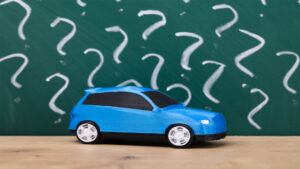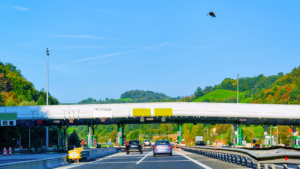5 Winter Driving Mistakes That Are Worse Than Shoveling Snow

Let’s be honest, anybody that goes around preaching “Christmas cheer” probably doesn’t have to shovel snow very often. It’s cold, it’s slippery, it takes a lot of time, and it can be physically taxing. Especially when you get blessed with the task of digging your vehicle out of a snow mound before you have to leave for work. Even as you read this, the very thought of it is mildly infuriating.
Nobody wants to wake up extra early and have to wipe the snow off the car before embarking on their morning commute. But that doesn’t mean you shouldn’t do it, among other things that would make winter driving much safer.
1. Clear ALL of the Snow and Ice Off Your Windshield
We’ve all seen it before. You’re driving down the road after a snow storm and then you see that one car that only has the snow and ice cleared from the driver’s side of the windshield. Not only is it a sign of laziness, but it’s also extremely unsafe for the driver, as well as everyone else on the road. All of that extra snow still on the windshield is still an obstruction that hinders the driver’s peripheral vision.
Because they were out driving with only 5% of the snow cleared from their windshield, the driver of the vehicle below received a $553 ticket for 2nd-degree negligent driving.
#KitsapCounty: A trooper stopped this driver on SR 16 after the vehicle was observed to be completely covered in snow. The driver received a $553 ticket for negligent driving in the 2nd degree.
— Trooper Katherine Weatherwax (@wspd8pio) December 4, 2022
Please take the time to remove all snow from your vehicle before you leave the house. pic.twitter.com/pRHAbdxc8p
2. Don’t Leave Extra Snow on Your Vehicle Anywhere
Extra snow on your windshield is one thing. But in some states, driving around in a vehicle covered with a dense layer of snow is even more dangerous. In the state of New Hampshire, “Jessica’s Law” is a snow-removal law named after Jessica Smith who was killed in a multi-vehicle accident caused by falling ice from another driver. Established in 2001, first-time offenders receive a $250 fine. A second offense carries a fine of up to $1,000. A third offense will result in either points off your driver’s license or losing it temporarily.
The state of Pennsylvania adopted a similar law in 2022 known as “Christine’s Law”, which is also the result of an unfortunate death caused by uncleared snow from another vehicle. Requiring drivers to clear all of the snow off of their vehicles at least 24 hours after a heavy snowfall, offenders can receive fines ranging from $50 to $1,500.
So spare yourself and everyone else the additional risks and spend an extra five minutes wiping the snow off of the roof of your car.
3. Get an Ice Scraper/Brush
The bad news is your windshield is covered in a thin layer of ice and snow. The good news is it takes no more than two minutes to remove. The average ice scraper/brush combo from your local grocery or hardware store costs about $16. If you live in an area where snow is a regular occurrence, this is an absolute necessity. In some cases, you may even want to keep a snow shovel stored too.
4. Driving Without Emergency Supplies
We’ve all seen cars broken down on the side of the road following heavy snowfall and thought to ourselves, “I wouldn’t want to be them.” As long as you keep the right supplies ready, you’ll never have to.
Tire-changing kits, jumper cables, flashlights, emergency flares, and bright clothing should always be stored somewhere in your vehicle at all times. In some extreme cases, storing extra blankets, phone chargers, and snacks would also come in handy. Otherwise, you’ll find yourself reliving the opening scene of every scary movie.
5. Just Take It Easy on the Throttle
It’s understandable that you don’t want to be trapped on the road in the middle of a snowstorm. But as the saying goes, “slow and steady wins the race.” Just because your vehicle has four-wheel drive and you are confident in your driving abilities under harsh weather conditions, it doesn’t give you the green light to haul off on the gas pedal.
There is no need to get aggressive in traffic, and it’s strongly recommended to avoid changing lanes too frequently. Avoid any slipping and fishtailing by gently applying pressure to the gas pedal. You’ll safely remain on a consistent path, reducing the likelihood of encountering additional hazards.









